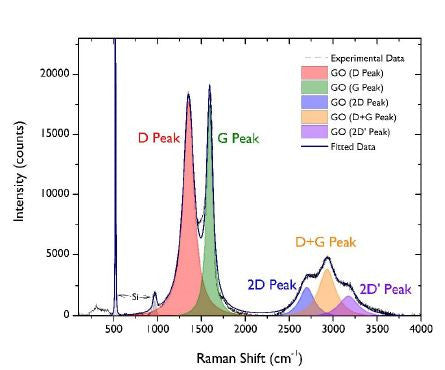Graphene oxide: The Benefits of Buying
Graphene oxide was first reported in the literature over 150 years ago, at a time when there was little interest in exploring the benefits of the material in the multitude of application areas it is currently being used in. Interest in graphene oxide rose dramatically with the discovery of, and Nobel prize for, graphene. The subsequent years have seen the use of graphene oxide in a diverse range of applications, with many researchers focussing on graphene oxide as a potential precursor material for graphene with specific graphene oxide applications now under development.
With no suppliers, initial graphene oxide researchers were unable to purchase graphene oxide and therefore synthesised all of their own material. Despite multiple graphene oxide suppliers launching a variety of products for this market in the past few years, some researchers are still undecided as to whether they should purchase or make their own graphene oxide for their work. While William Blythe understand that there are always reasons to synthesise your own graphene oxide, we have tried to overcome some of the most common concerns around purchase with our GOgraphene webshop.
Consistent quality
William Blythe are aware that some suppliers do not offer a consistent product. As an established chemicals manufacturer with over 150 years’ experience supplying chemicals, we ensure our graphene oxide meets the same high standards as our other products before we dispatch your order.
Flexibility
Buying from someone else will always reduce some of the flexibility compared to in house synthesis. William Blythe have tried to overcome this by offering multiple product forms, developing a high concentration dispersion which can be easily diluted and by taking requests for custom functionalisation of our standard material.
Availability
To keep results comparable, most researchers do not want to swap materials supply part way through their research programme. We monitor our stock levels carefully to make sure we always have enough of our graphene oxide to fulfil our orders. Keep an eye on our lead times if you have any concerns
Volume
Graphene oxide is currently only available for purchase online in relatively low quantities. Some researchers are concerned that the raw materials availability will prevent their application from being scalable. As William Blythe has already developed scale-up plans, this need not be a concern. Not only is our process is scalable, but within 12 months of demand projections requiring it, William Blythe can scale on to a dedicated multi-tonne production facility.
Price
Some materials suppliers fluctuate their prices, meaning there are some researchers who do not want to become reliant on a materials supplier. The graphene oxide available on the GOgraphene webshop has never been increased in price. Depending on the currency you are purchasing in, the screen may display slight variations, however our GBP pricing has not been increased since launch.
We hope that the above helps to alleviate some of the concerns which we know exist in the marketplace. If you have other concerns or questions regarding purchase versus in house synthesis, please get in touch. There are a host of benefits to purchasing graphene oxide, including saving time and removing the need for hazardous synthesis. If you are ready to switch to buying graphene oxide, please take a look at our current product portfolio.


